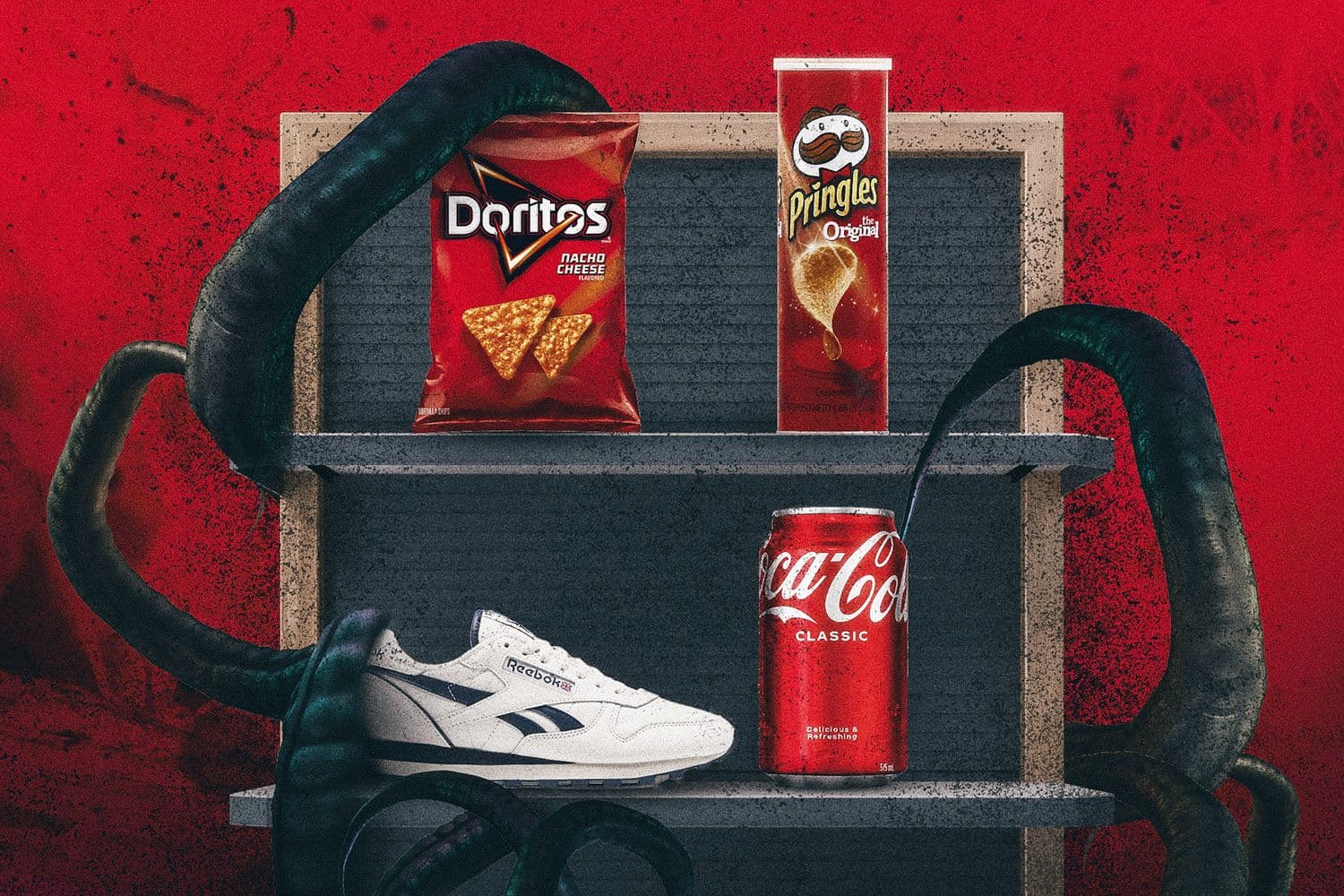How’d all those brands get into Stranger Things?
It’s more complicated than you might think.

Grant Thomas
• 5 min read
If you’ve watched Stranger Things, you probably noticed that Hawkins, Indiana, is hawking a lot of products these days.
Name a major brand, and it has probably appeared in the series. Eggo? Check. Nike? Check. Coca Cola? Burger King? 7-Eleven? Adidas? Well…you get the point. So far, more than 140 brands and products have been spotted in the series’s fourth season by the Product Placement Blog, which tracks brand appearances in film and television.
As Season Four, Volume Two premieres, brands are still looking for ways to worm their way into the series. But it’s harder than it might seem for a brand to lock down screen time in the Starcourt Mall or The Upside Down.
“Everything that happens on Stranger Things is led by creative,” said Erin Schmidt, chief of product placement at BEN, which has worked to place 22 brands—including KFC, Oreo, Gap, Dunkin, U-Haul, Milk, Dr. Pepper, and Hardees—into the series throughout the years. “It’s not dictated by brands. And it’s not dictated by Netflix.”
Production value
The potential for brand integrations with Stranger Things became evident after Season One, after Eggo was depicted as the snack of choice for Eleven, played by Millie Bobby Brown, or when she crushed Coke cans with psychokinetic powers.
“After Season One, every phone call I got was, ‘I want to be in Stranger Things!’” Schmidt recalled.
Product placements are left to the discretion of the Duffer Brothers, the show’s creators, and there are no paid integrations, Netflix told Marketing Brew. To try to get onscreen, BEN works directly with the showrunners and prop masters to identify where there are opportunities for brand integrations, before determining what kinds of resources brands can provide to the set.
Take Season Two’s KFC brand integration, for example, in which Steve Harrington, played by Joe Keery, awkwardly eats a meal of KFC chicken with Barb’s parents after her demise. Behind the scenes, BEN collected period-appropriate packaging assets from KFC and had the food containers created at a prop house.
Season Three provided even more opportunities for brand integrations with the construction of the Starcourt Mall, which featured brick-and-mortar stores as well as plenty of opportunity for characters to sip New Coke. More than 100 brands appeared in the third season alone, with advertising value estimated to be more than $15 million, according to a report from the UK-based firm Concave Brand Tracking.
Helping the prop master is a win-win for brands, which have the opportunity to appear in episodes, and for showrunners, who are racing to source props—no easy task when working on a period-specific piece. Providing props to shows can lead to serendipitous moments.
“Even if it wasn’t a scripted scene—I even think there was a character just drinking Dr. Pepper on a park bench—that meant one less thing the prop master had to do to actually supply that product,” Schmidt said.
Product Placement Blog/Netflix
Nostalgia factor
Outside of the series itself, co-marketing between Netflix and brands looking to capitalize on the series also seem to be everywhere, from Baskin Robbins’s Stranger Things-inspired ice cream flavors, to limited-edition Stranger Things Doritos, to a Stranger Things-themed starter set for the role-playing game Dungeons & Dragons.
Get marketing news you'll actually want to read
Marketing Brew informs marketing pros of the latest on brand strategy, social media, and ad tech via our weekday newsletter, virtual events, marketing conferences, and digital guides.
There’s a few reasons why: One is, perhaps unsurprisingly, the cultural clout that the show has. The show’s fourth season was watched for more than 930.3 million hours in its first 28 days, the most for any English-language Netflix series ever.
Another is the fact that Stranger Things mainlines nostalgia, which may make older viewers think fondly of all the times—and brands—they enjoyed in the good old days.
“Stranger Things was a really good fit from the beginning because it’s really relevant with young people, but it also has this ’80s vibe to it that I can relate to,” explained Stacy Taffet, SVP of brand marketing for Frito-Lay. Similarly, “Doritos is really a special brand where it’s very modern, and it really resonates with young consumers today, but it also has a real nostalgic, sort of retro vibe to it.” (Helpfully, Doritos Cool Ranch debuted for the first time in 1986—right when the latest season is set.)
Doritos had made appearances in Stranger Things episodes prior, but for the fourth season, Taffet wanted to go beyond a standard product placement or sponsorship. She worked directly with Netflix’s brand partnerships team, as well as the show’s creators, to create a co-marketing plan predicated on the story of a tour bus from the fictional Doritos Music Fest ’86 being sucked into The Upside Down.
Last month, the snack brand hosted a virtual concert featuring real-life ’80s musical acts including The Go-Go’s, Corey Hart, and Soft Cell (plus non-’80s pop star Charli XCX), with tickets to the concert available through scanning a bag of Doritos. More than 140,000 people who streamed the concert purchased Doritos bags to watch it, Taffet said.
While Taffet declined to discuss the financial details of the arrangement with Netflix, she said partnerships need to be mutually beneficial and creatively additive to work well.
“We needed Doritos, and we needed Stranger Things, to tell this part of the story, and that authentic story is what people really gravitated towards,” Taffet said. “If you can find that creatively—whatever brand that you manage, with whatever piece of IP it is—that’s the secret.”
Watch our episode of Marketing Brew Weekly where we deep dive into Netflix House!
Get marketing news you'll actually want to read
Marketing Brew informs marketing pros of the latest on brand strategy, social media, and ad tech via our weekday newsletter, virtual events, marketing conferences, and digital guides.